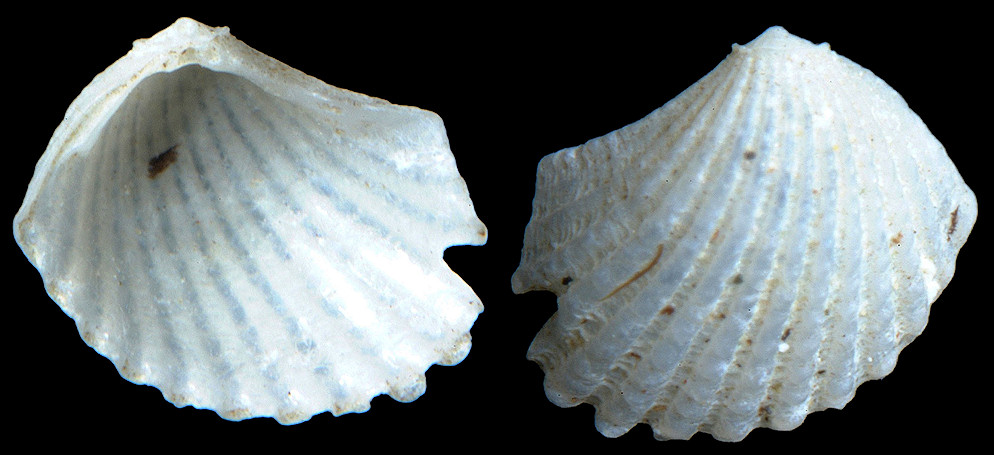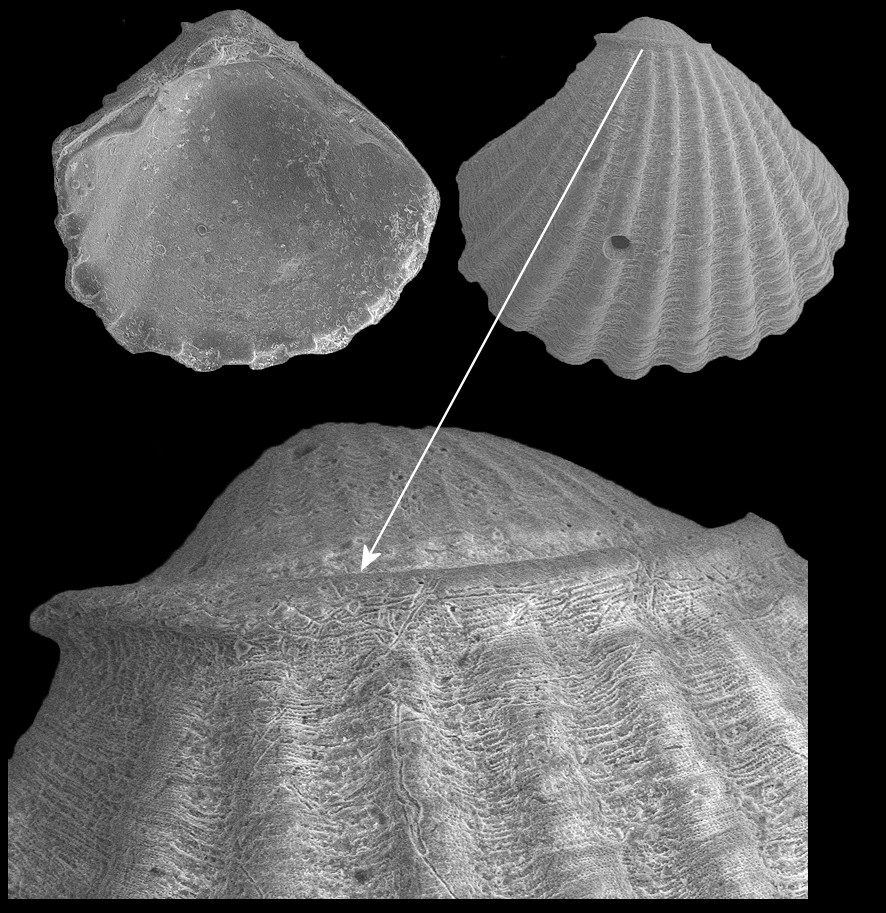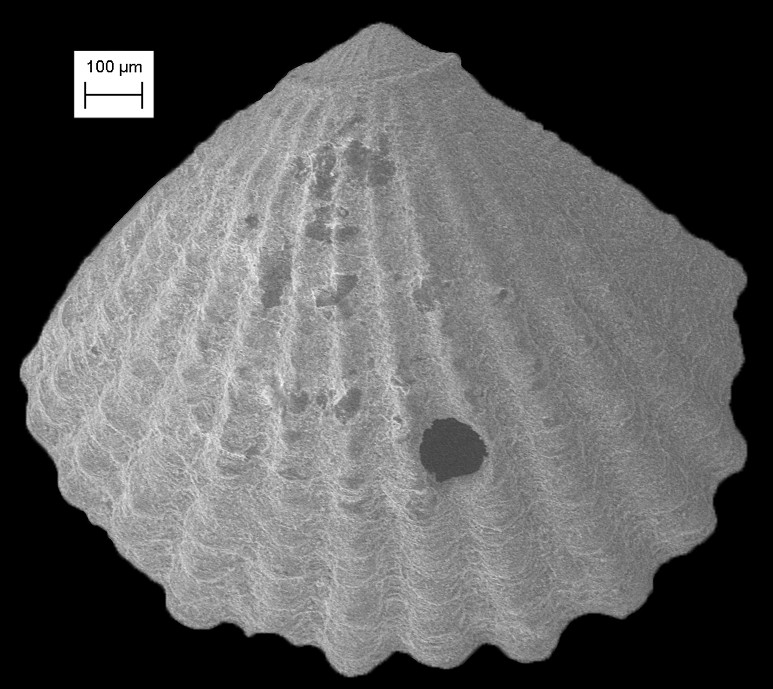|
Carditopsis bernardi (Dall, 1903) |
|
|
|
From rubble on beach, west of Portobelo, Colón Province, Panama (2.2 mm.). Digital images by David Kirsh. |
|
Scanning Electron Micrographs (SEM) |
|
|
|
|
| Culled by H. G. Lee from 300 mL grunge sample taken at the base of ledge at 80 ft. ~ 1.5 miles E Jupiter Inlet by Rick Edwards! July 4, 2021 (1.01 mm.) (top) and 1.05 mm. (bottom)). SEMs performed by H. G. Lee in collaboration with Dr. Ann Heatherington, Dept. of Geological Sciences, University of Florida, Gainesville, FL. |
|
Scanning Electron Micrograph (SEM) Of Fossil Specimen |
|
|
|
Cochran Pit, Caloosahatchee Formation, LaBelle, Hendry County, Florida (1.30 mm.). SEM produced in collaboration with Dr. Ann Heatherington, Dept. Geological Sciences, University of Florida, Gainesville, FL. According to Campbell (1993), this species was unknown in the Plio-Pleistocene fossil record of the SE United States. Furthermore, the Recent FL records in the middle of this page appear to be the first from the state (and the rest of the Gulf of Mexico); see authorities 2-4 below.
|



